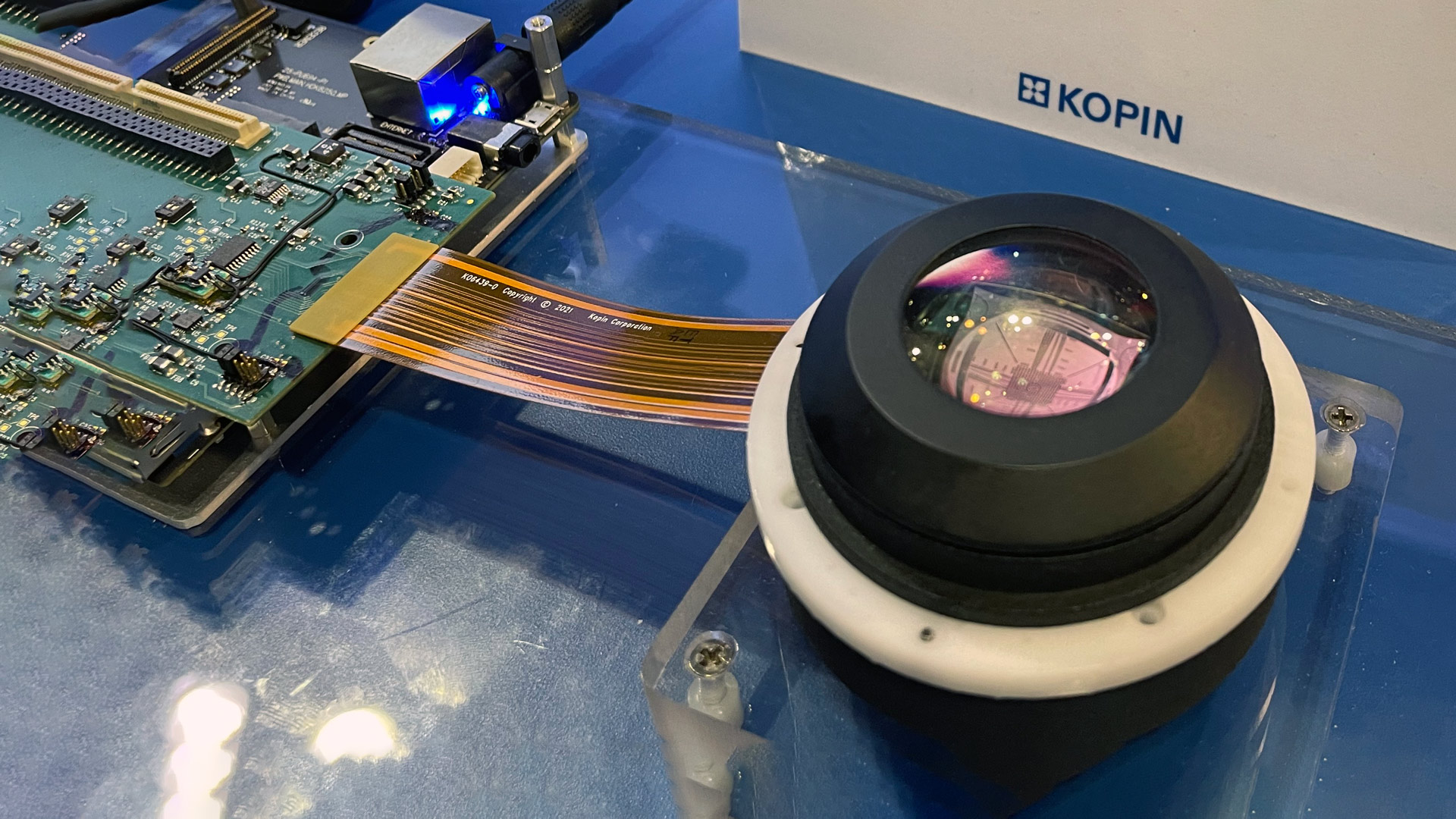Display manufacturer Kopin recently demonstrated its latest VR display and pancake optic which promises higher resolution and more affordability for future VR headsets.
Most modern VR headsets take on the ‘box on your face’ form-factor because of a simple display architecture which necessitates a certain distance between the display and the lens. In the effort to make VR headsets more compact in the near-term, so-called ‘pancake optics’ are emerging as a leading candidate. These more complex optics reduce the distance required between the display and the lens.
Primer: Why Are VR Headsets so Big, and How Do Pancake Optics Help?
Why Are Today’s Headsets So Big?
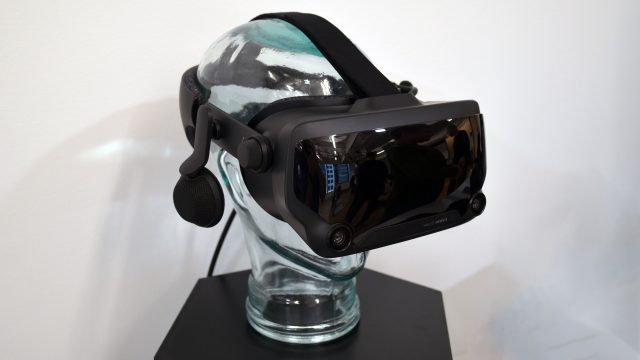
It’s natural to wonder why even the latest VR headsets are essentially just as bulky as the first generation launched back in 2016. The answer is simple: optics. Unfortunately the solution is not so simple.
Every consumer VR headset on the market uses effectively the same optical pipeline: a macro display behind a simple lens. The lens is there to focus the light from the display into your eye. But in order for that to happen the lens needs to be a few inches from the display, otherwise it doesn’t have enough focusing power to focus the light into your eye.
That necessary distance between the display and the lens is the reason why every headset out there looks like a box on your face. The approach is still used today because the lenses and the displays are known quantities; they’re cheap & simple, and although bulky, they achieve a wide field-of-view and high resolution.
Many solutions have been proposed for making VR headsets smaller, and just about all of them include the use of novel displays and lenses.
Pancake Optics (AKA Folded Optics)
What are pancake optics? It’s not quite what it sounds like, but once you understand it, you’d be hard pressed to come up with a better name.
While the simple lenses in today’s VR headsets must be a certain distance from the display in order to focus the light into your eye, the concept of pancake optics proposes ‘folding’ that distance over on itself, such that the light still traverses the same distance necessary for focusing, but its path is folded into a more compact area.
You can think of it like a piece of paper with an arbitrary length. When you fold the paper in half, the paper itself is still just as long as when you started, but its length occupies less space because you folded it over on itself.
But how the hell do you do that with light? Polarization is the key.
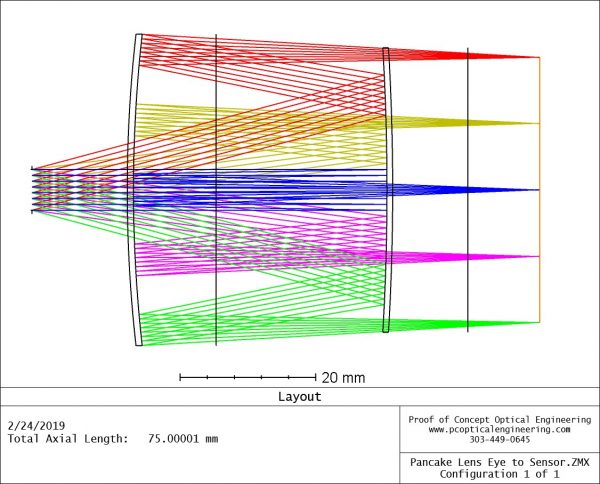
It turns out that beams of light have an ‘orientation’ which is referred to as polarization. Normally the orientation of light beams are random, but you can use a polarizer to only let light of a specific orientation pass through. You can think of a polarizer like the coin-slot on a vending machine: it will only accept coins in one orientation.
Using polarization, it’s possible to bounce light back and forth multiple times along an optical path before eventually letting it out and into the wearer’s eye. This approach, known as pancake or folded optics, allows the lens and the display to move much closer together, resulting in a more compact headset.
Kopin is an electronics manufacturer best known for its microdisplays. In recent years the company has been eyeing the emerging XR industry as a viable market for their wares. To that end, the company has been steady at work creating VR displays and optics that it hopes headset makers will want to snatch up.
At AWE 2023 last month, the company demonstrated its latest work on that front with a new plastic pancake optic and flagship VR display.
Kopin’s P95 pancake optic has just a 17mm distance between the display and lens, along with a 95° field-of-view. Furthermore, it differentiates itself as being an all-plastic optic, which makes it cheaper, lighter, more durable, and more flexible than comparable glass optics. The company says its secret sauce is being able to make plastic pancake optics that are as optically performant as their glass counterparts.
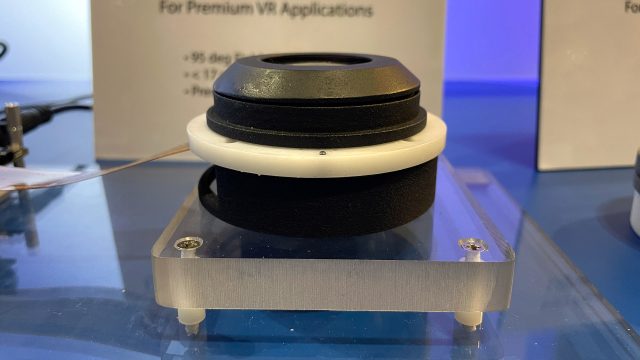
At AWE, I got to peak through the Kopin P95 optic. Inside I saw a sharp image with seemingly quite good edge-to-edge clarity. It’s tough to formulate a firm assessment of how it compares to contemporary headsets as my understanding is that the test pattern being shown had no geometric or color corrections, nor was it calibrated for the numbers shown.
You’ll notice that the P95 is a non-Fresnel optic which should mean it won’t suffer from the kind of ‘god-rays’ and glare that almost every contemporary VR headset exhibits. Granted, without seeing dynamic content it’s tough to know whether or not the multi-element pancake optic introduces any of its own visual artifacts.
Even though the test pattern wasn’t calibrated, it does reveal the retina resolution of the underlying display—Kopin’s flagship ‘Lightning’ display for VR devices.
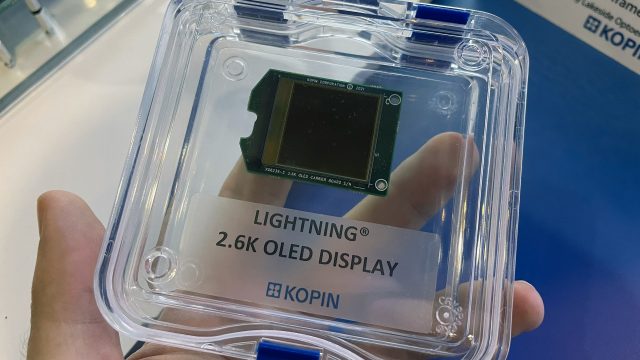
This little beauty is a 1.3″ OLED display with a 2,560 × 2,560 resolution running up to 120Hz. Kopin says the display has 10-bit color, making viable for HDR.
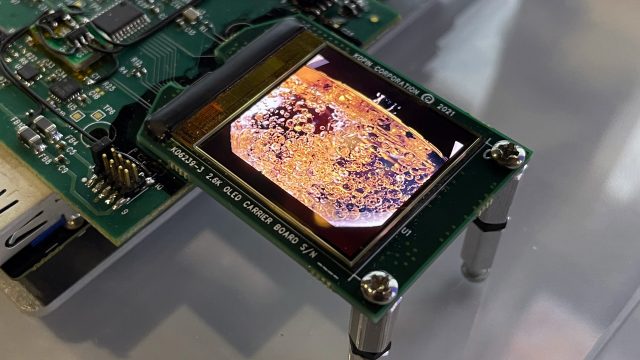
Combined, the P95 pancake optic and the Lightning display appear to make a viable, retina resolution, compact display architecture for VR headsets. But it isn’t necessarily a shoe-in.
For one, the 95° field-of-view is just barely meeting par. Ostensibly Kopin will need to grow its 1.3″ Lighting display larger if it wants to meet or exceed what’s offered in today’s VR headsets.
Further, the company wasn’t prepared to divulge any info on the brightness of the display or the efficiency of the pancake lens—both of which are key factors for use in VR headsets.
Because pancake lenses use polarized light and bounce that light around a few times, they always end up being less efficient—meaning more brightness on the input to get the same level of brightness output. That typically means more heat and more power consumption, adding to the tradeoffs that would be required if building a headset with this display architecture.
Kopin has been touting its displays and optics as a solution for VR headsets for several years at this point, but at least in the consumer & enterprise space they don’t appear to have found any traction just yet. It’s not entirely clear what’s holding the company back from break into the VR space, but it likely comes down to the price or the performance of the offerings.
That said, Kopin has been steadily moving toward the form-factor, resolution, and field-of-view the VR industry has been hoping for, so perhaps the P95 optic and latest Lightning display will be the point at which the company starts turning heads in the VR space.
,
